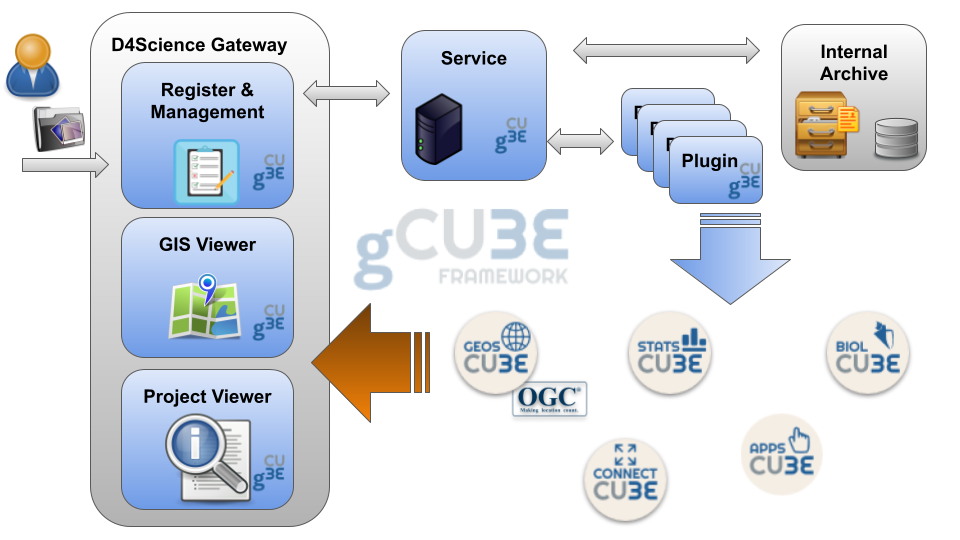GeoPortal
Contents
Overview
GeoPortal is a feature-complete framework enabling the publication, access and management of GIS projects consisting of multiple documents, images, and datasets. It can be configured with the XML specification of the GIS project data model.
This document outlines the design rationale, key features, and high-level architecture, the options for their deployment and as well some use cases.
Key features
- GIS Projects Publication mangement
- CRUD operations, publication lifecycle, validation and associated data management features.
- Automatic GIS Indexing
- GIS Data is indexed in order to serve custom defined queries.
- OGC Compliant interfaces
- GIS Data and metadata is exposed in OGC Compliant services and formats
- Extensible GIS Project defintions and behaviour
- GIS Projects structure are defined by extensible profiles which include instruction for GUI generation, indexing and validation.
Design
Philosophy
Aim of the framework is to maximize adaptability by supporting custom model and behaviour definition.
Architecture
The framework includes:
- Data Collection Form assisting users to publish GIS projects;
- GIS Viewer allowing any user to visualize projects on a map;
- Project Viewer assisting users to access all the information, documents, images and datasets associated to the GIS project;
- GeoPortal Service managing validation and management of GIS projects.
The service relies on the D4Science Workspace for storing and accessing attached documents and on the D4Science SDI Spatial Data Infrastructure to offer OGC Compliant Services (e.g. WMS, WFS, WCS, etc.).
It also uses an internal archive of registered documents for the management of Projects lifecycle and for querying purposes.
Following is a conceptual schema of the framework in relation to the D4Science infrastructure and user perspective.
